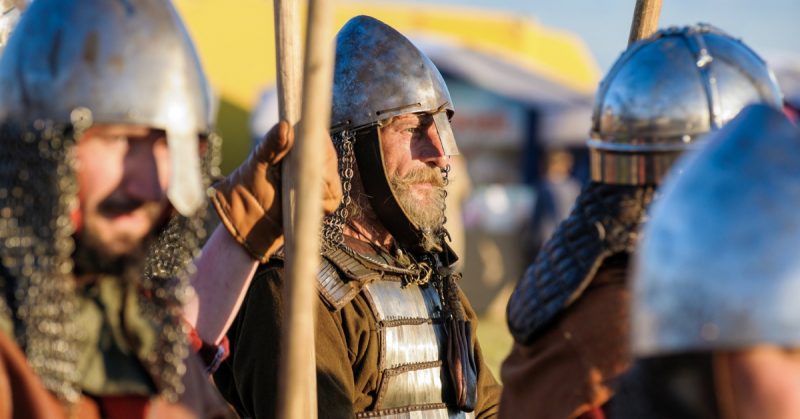The Battle of Velbazhd was fought between the Kingdom of Serbia under Stefan Uroš III, known as Stefan Dečanski, and the Bulgarian Empire under Michael III on July 28, 1330. The result of the battle was the death of the Bulgarian emperor and a resounding victory for the Serbian army.
This ushered in an era in the Balkans of Serbian dominance achieved by Stefan Dušan, the Young King at the time of the battle. He would later crown himself as an emperor.
Setting
The battle itself was preceded by a number of important events in, most notably, the Byzantine Empire.
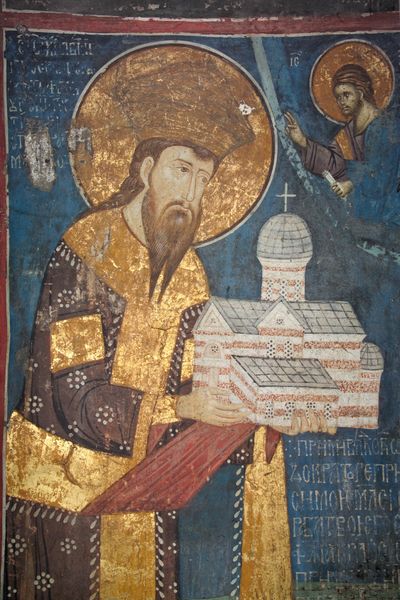
Peace between Byzantium and Serbia at the time owed its existence to the personal friendship and marriage ties between Emperor Andronikos II Palaiologos and King Stefan, given that Stefan’s wife was a Byzantine princess. However, in 1328 Andronikos II was overthrown by his grandson, young Andronikos III, after a prolonged civil war in which the King of Serbia actively supported the old emperor, thus establishing himself as the enemy of the new ruler of Byzantium.
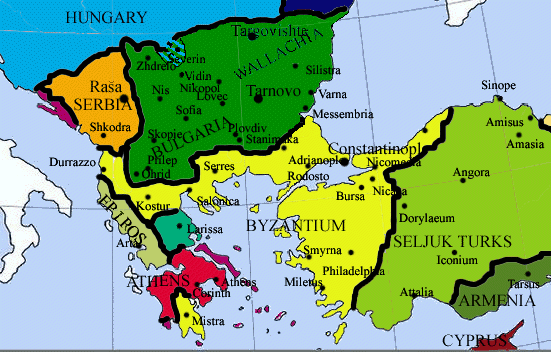
Previously, during the reign of Stefan Uroš II Milutin (1282-1321), Serbia had managed to expand its territory into northern Macedonia, held by the weakened Byzantium that suffered continuous raids in Anatolia from the ever expanding Turks.
Now, emboldened by his decisive victory, Andronikos was eager to regain the lost territories and eliminate his enemy in the process. In order to be sure of his victory and greatly overwhelm the Serbian force, he offered an alliance to the Bulgarian Tsar Michael III who was indeed eager to expand his realm at Serbia’s expense, even though he was married to the sister of the Serbian King.
Soon enough, Michael divorced his wife and married the sister of Andronikos, cementing the alliance between the two empires that had now set their sights on dividing Serbian lands between themselves.
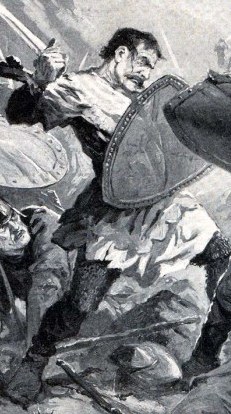
The stage was set for war.
Prelude
The campaign began in the early summer of 1330 with Byzantine incursions in northern Macedonia. However, Andronikos III did not march too deep into the Serbian territory and neither did he attempt to capture any major settlements, instead concentrating his attacks on the borderland. It was evident that he awaited Bulgarian action.
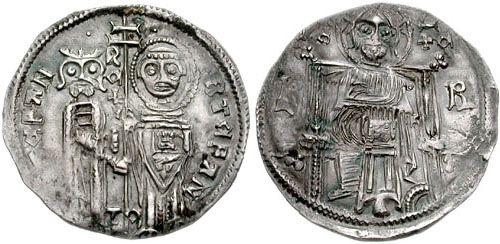
A plan devised by the two empires was rather simple: Serbia was to be attacked on two fronts. After entering Serbian lands, the two attacking armies were to meet somewhere in Macedonia and together face the Serbians in a decisive battle.
Yet the the ruler of Byzantium clearly had the intent to dishonor these plans from the start, given that he made no true effort to connect with the Bulgarian forces. Strategically, a Bulgarian Pyrrhic victory over the Serbs would have granted Andronikos much greater leverage in the aftermath of the conflict and the division of territory, given that his army would remain unscathed.
Meanwhile the Bulgarian army, led by their emperor, left Tarnovo on July 19. They first marched over to Vidin, probably in order to join up with Despot Belaur, the ruler of the city, and his Tartar and Vlach mercenaries. Afterwards, the combined force headed south, and after gathering additional contingents in Sofia it crossed the border with Serbia near the town of Zemlin.
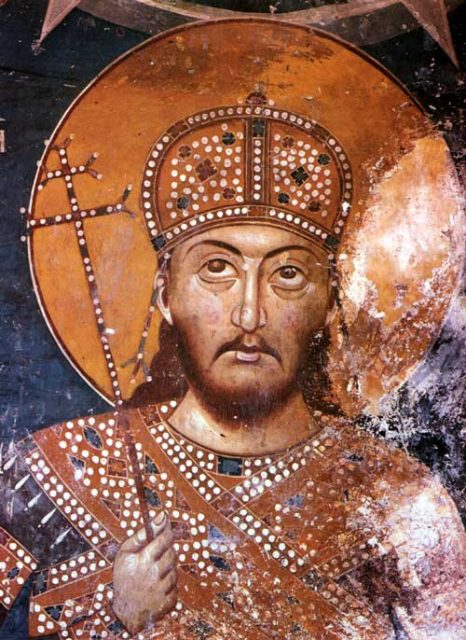
The Serbian king, Stefan Uroš III, was aware of what was about to happen. Hoping to cut off the Bulgarians from their Byzantine allies, he gathered his army at the Dobričko polje, near the modern day city of Leskovac, anticipating an attack from the north.
However, when he received word of the Bulgarian movement in the south, he swiftly rushed to redeploy his army on the west bank of the river Kamenica, where he correctly presumed that the enemy army would pass. Only the vanguard of the Serbian army managed to reach the site before the Bulgarians appeared.
Upon the meeting of the two armies, Stefan attempted to negotiate with his adversaries, but this proved rather futile since the Bulgarians were certain of their victory, believing that the Serbs did not expect any reinforcements. Meanwhile, discipline in the Bulgarian ranks plummeted, and they pillaged the countryside.
Stefan was successful in delaying the battle until the rest of his force managed to reach the river by dawn on July 28. He gave them some time to rest before the surprise attack that would commence at daybreak, against the Bulgarian army that had encamped near the town of Velbazhd.
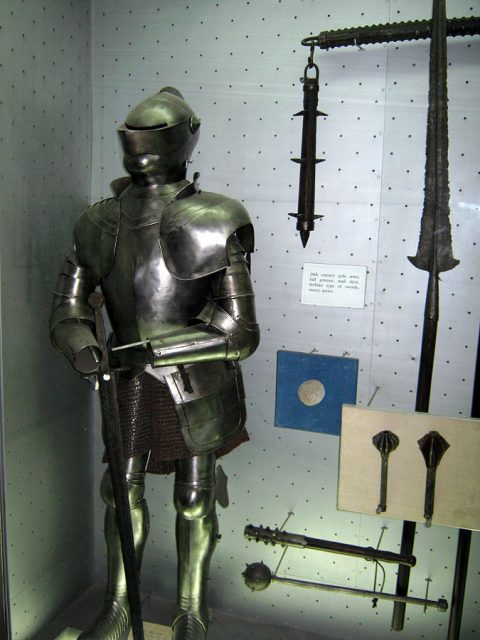
Force Compositions
Sources from the Middle Age are notoriously unreliable and vague regarding the numbers and the details of the armies that participated in the battles of the time. Sometimes, different sources greatly disagree, perhaps writing of fantastic and imaginary events that almost certainly did not take place, or citing an incredibly exaggerated number of participants in order to either glorify the event, or to provide a worthy excuse if the said event resulted in a great loss for a certain party.
As such, the estimates of the Young King Stefan Dušan—Stefan III’s son and heir to the Serbian throne, who took a significant role in the battle—that the Bulgarian army numbered over 80,000 men while the Serbian army had 15,000 men, are almost clearly false.
Some other sources claim that the Serbs greatly outnumbered the Bulgarians. This impression might come from the fact that much of the Bulgarian army was scattered and unorganized when the battle began.
The most realistic estimate would be that the Bulgarian army had 15,000 warriors, while the Serbian one had around 18,000 men. Probably about 3,000 Vlachs and Tartars fought under the Bulgarian standard as mercenaries, but the Serbs were not short of highly professional soldiers either, given that they employed 2,000 heavy cavalrymen of German and Catalonian origins.
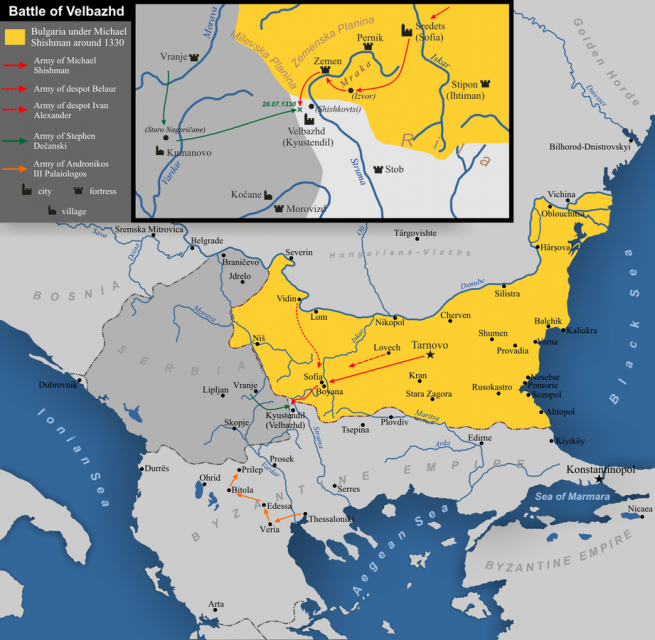
Fighting
The Bulgarians did not expect the Serbian attack at all, especially not after the negotiations. There are some sources that even claim that a truce was agreed upon and that Stefan did not respect it.
The surprise assault yielded incredibly efficient results, given that the Bulgarians’ ranks in the proximity of the emperor could not withstand the first wave of attack spearheaded by both the mercenary and noble cavalrymen led by the Young King. Dušan particularly distinguished himself in this battle, commanding the vanguard “decisively and vigorously” and charging straight toward the site where the Bulgarian imperial banner was risen.
Soon enough, the Bulgarians broke their hastily assembled formation and started fleeing the battlefield, even while their other, more remote contingents were rallying to aid them. They too eventually broke before the onslaught of the Serbian troops.

Michael III attempted to reassemble the ranks of his army and resist the Serbian attack with his remaining forces, but after failing to do so, he himself was forced to flee as well. However, he was not lucky enough to escape.
What remained of the Bulgarian army was rallied by Michael’s brother Belaur, who managed to organize a retreat and salvage at least a part of the original force that was encamped near Velbazhd.
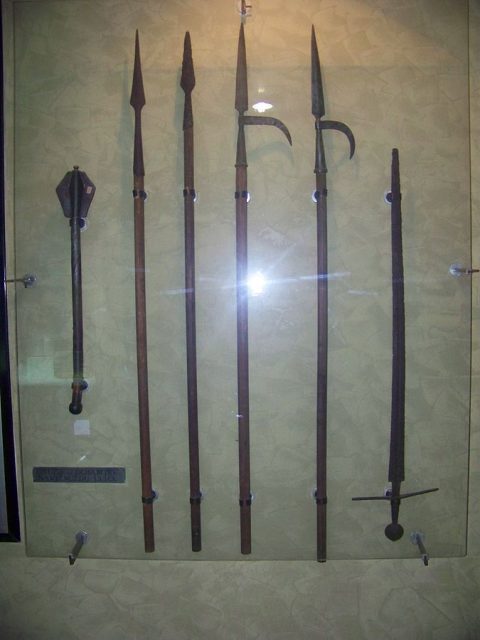
Results and the Aftermath
The battle was a decisive victory for the Kingdom of Serbia, while the Bulgarian Empire was defeated and left without a ruler, for all sources agree that Emperor Michael III did not survive the battle. There are, however, a number of accounts citing the different ways he might have perished.
Stefan Dušan later claimed that he himself cut off the emperor’s head. Michael allegedly fell off his horse during the rout and was captured by a number of Serbian cavalrymen, who brought him to Stefan. In Stefan’s writings, he says: “And to Mihailo, the Bulgarian Emperor, I’ve ripped off the head with a sword.”
According to another version written by Danilo, a chronicler at the time, the emperor’s horse tripped and fell. Afterwards, the Serbian soldiers caught up with him and killed him where he stood.
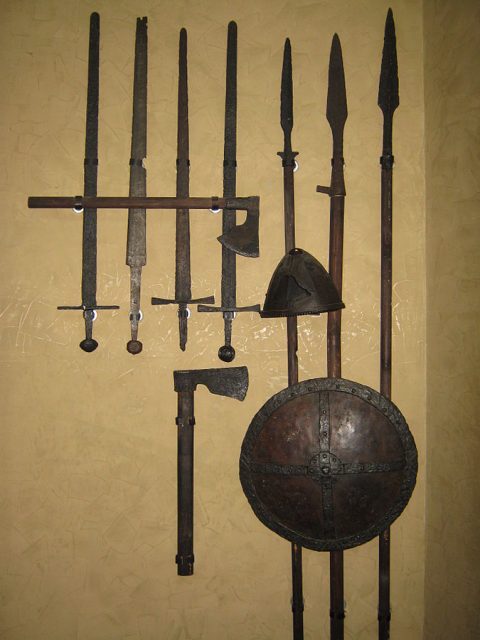
On the other hand, according to Mauro Orbini, Michael fled into a nearby forest, where he was later captured by wounded soldiers that hid there. After the battle, he was brought before King Stefan and perished by “God’s will” as they spoke.
There is also a source claiming that the emperor died after three days in the custody of the Serbian King, succumbing to his wounds.
Many Bulgarian nobles were also captured during the battle. A few days after it, they were brought before Stefan Uroš, with iron chains on their legs. At first, they were unsure of what the Serbian king had in mind for them.
Rumors of Michael’s death had spread throughout their ranks, but they believed that it was only a well crafted lie in order to break their spirits. They changed their minds once the body of the dead emperor was displayed before them, and as Danilo writes, “A few of them, seeing the truth, bitterly wept.”
Michael III was later buried by Stefan in a respectful funeral ceremony.
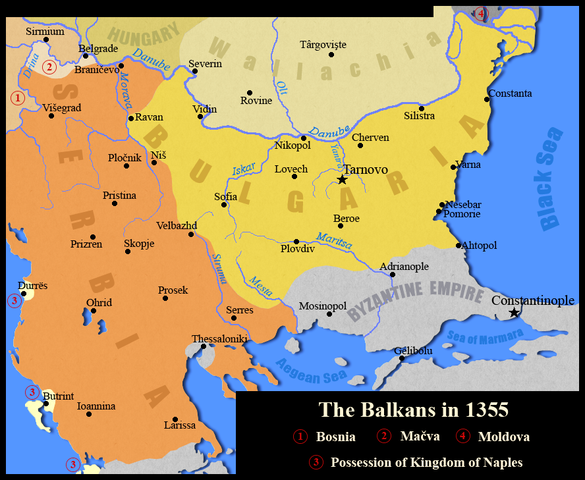
News of the Serbian victory traveled fast and eventually reached Emperor Andronikos III. He immediately decided to end his campaign against Serbia and left only meager garrisons in the occupied borderland territory, which were quickly driven out of Serbia by Dušan. Andronikos decided to march his army east, and eventually started attacking Bulgarian cities and towns on the Black Sea.
The Serbian army continued to pursue what remained of the Bulgarian army. After some time, Bulgarian boyars confronted the Serbian king near the town of Radomir and sued for peace.
The terms were arguably lenient and stated that Stefan Dečanski’s nephew Jovan Stefan, who was the son of his sister and Michael III, was to be crowned as the next Bulgarian Emperor. The city of Nish was to be ceded to Serbia, and the mother of the Emperor would become Jovan’s regent.
With this victory, Serbia was bound to indirectly influence the Bulgarian court. It thus also secured its eastern border and, over time, it could expand towards the south and the Byzantine Empire.
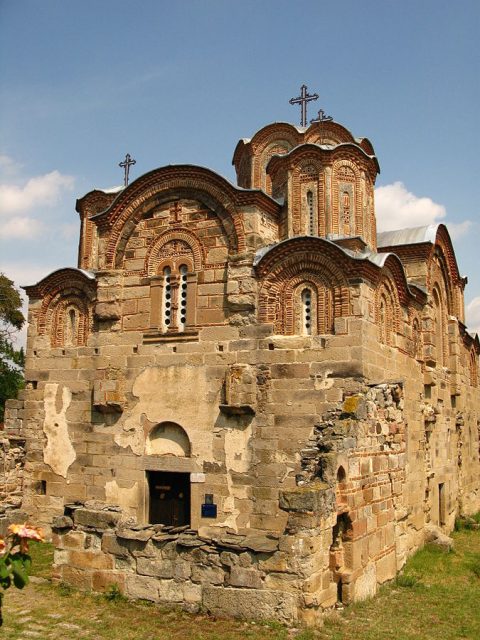
However, Stefan Uroš was reluctant to pursue further war causes and preferred not to continue the current conflict against Byzantium. This caused great disatisfaction among his nobles, who felt that the kingdom failed to capitalize on its great victory and that they had been denied wealth and glory that could have been seized through conquest.
It would be sensible to presume that King Stefan anticipated rebellions in Bulgaria against his nephew and wanted to consolidate his influence there first, before moving on to strike at Byzantium. However, his heir Dušan was eager to continue the war against the Byzantines and thus found a great deal of support among the nobility.
After a brief war, Dušan would overthrow his father in 1331 and crown himself king. After two months of holding his father in prison, he probably strangled Stefan Dečanski.
During the civil war in Serbia, a rebellion in Bulgaria took place and Jovan Stefan was overthrown in favor of Despot Ivan Alexander. Alexander immediately expelled the Serbians out of his court, which effectively ended the Serbian influence in Tarnovo.
Ivan Alexander did, however, seek an alliance with the new Serbian king right after he came to power. Dušan eventually ended up marrying the sister of the Bulgarian Emperor.
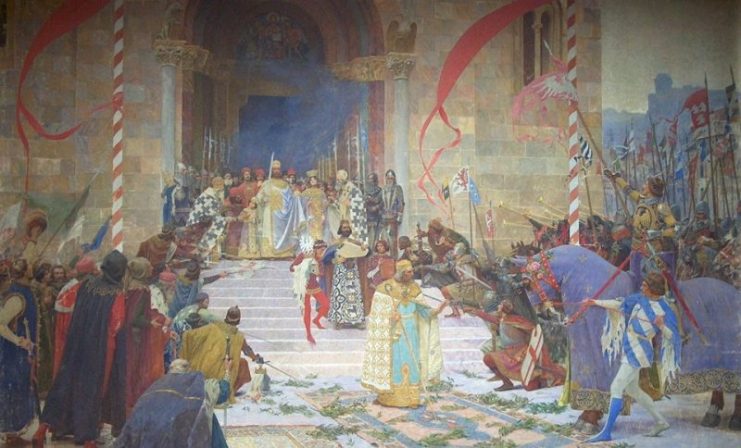
The battle at Velbazhd signaled the beginning of Serbian expansion southward and the severe decline of the Byzantine Empire, which would eventually result in the formation of Serbian Empire under Stefan Dušan.
Read another story from us: The Janissaries – An Elite Ottoman Army Unit Who Became Public Enemy No1
In the end, these events quickly lost a great deal of their significance, for the Serbian, Bulgarian, and Byzantine Empires did not survive the 15th century due to the onslaught of the Ottomans, who would then hold undisputed control over the Balkans until the 19th century.
